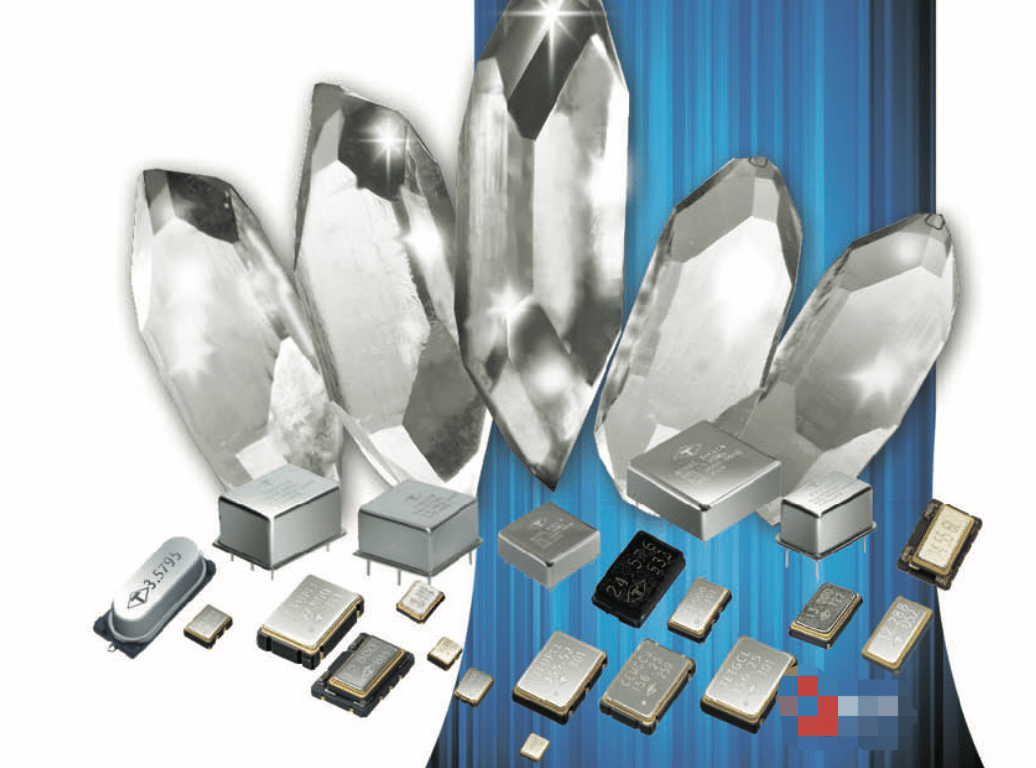
Quartz Crystal Oscillators
Our main products are Quartz Crystal, Crystal Oscillators, VCXO, TCXO, OCXO
Overview
A quartz crystal oscillator is an electronic circuit that uses the mechanical resonance of a vibrating quartz crystal to create an electrical signal with a precise frequency. These oscillators are fundamental components in modern electronics, providing accurate timing references.
Working Principle
Piezoelectric Effect
- Direct Effect: Mechanical stress on quartz produces an electrical charge
- Inverse Effect: Applied voltage causes mechanical deformation
- Quartz crystals exhibit both effects, enabling oscillation
Crystal Structure
- Cut from synthetic or natural quartz
- Common cuts: AT-cut (most popular), BT-cut, SC-cut
- Cut angle determines temperature stability and frequency characteristics
1. Circuit Operation
Basic Oscillator Circuit
- Crystal Element: Acts as a highly selective filter
- Amplifier: Provides gain to sustain oscillations
- Feedback Network: Returns signal from output to input
- Load Capacitors: Fine-tune the operating frequency
Common Circuit Types
- Pierce Oscillator: Simple, widely used in microcontrollers
- Colpitts Oscillator: Good stability, uses capacitive voltage divider
- Butler Oscillator: Low power consumption, good for battery devices
2. Key Characteristics
Advantages
- High Stability: Frequency tolerance typically ±10-100 ppm
- High Q Factor: 10,000 to 1,000,000 (very selective)
- Low Phase Noise: Excellent short-term stability
- Temperature Stability: Especially with temperature compensation
Specifications
- Frequency Range: 32.768 kHz to several hundred MHz
- Aging Rate: Typically <5 ppm/year
- Operating Temperature: Standard -40°C to +85°C
- Load Capacitance: Typically 12-30 pF
3. Applications
Consumer Electronics
- Watches: 32.768 kHz crystals for timekeeping
- Computers: Clock generation for CPUs and peripherals
- Smartphones: Reference frequency for communications
Communications
- Radio transmitters/receivers
- GPS systems
- Cellular base stations
- Satellite communications
Industrial/Scientific
- Frequency counters
- Signal generators
- Test equipment
- Scientific instruments
4. Types of Crystal Oscillators
Simple Crystal Oscillator (XO)
- Basic crystal oscillator
- No temperature compensation
- Suitable for general applications
Temperature Compensated (TCXO)
- Includes temperature sensor and compensation circuit
- Stability: ±0.5 to ±2 ppm over temperature
- Used in GPS, cellular devices
Oven Controlled (OCXO)
- Crystal maintained at constant temperature
- Stability: ±0.01 to ±0.1 ppm
- Used in base stations, precision instruments
Voltage Controlled (VCXO)
- Frequency adjustable via control voltage
- Used in phase-locked loops (PLLs)
- Typical pull range: ±50 to ±200 ppm
5. Design Considerations
Load Capacitance Matching
- Crystal must be matched to circuit load capacitance
- Incorrect loading causes frequency error
- Formula: CL = (C1×C2)/(C1+C2) + Cstray
Drive Level
- Excessive power can damage crystal
- Typical: 10-100 μW for standard crystals
- Lower drive reduces aging
Start-up Conditions
- Sufficient loop gain required
- Proper biasing of amplifier
- Consider start-up time requirements
6. Limitations and Challenges
Temperature Dependence
- Frequency varies with temperature
- AT-cut crystals minimize variation near room temperature
- Requires compensation for precision applications
Aging
- Frequency drift over time
- Caused by mass transfer, contamination
- Minimized by hermetic sealing, low drive levels
Mechanical Sensitivity
- Sensitive to vibration and shock
- Can cause frequency modulation
- Special cuts available for high-vibration environments
7. Future Trends
MEMS Oscillators
- Silicon-based alternatives to quartz
- Smaller size, better shock resistance
- Programmable frequencies
Advanced Compensation
- Digital compensation techniques
- GPS-disciplined oscillators
- Chip-scale atomic clocks
Integration
- System-on-chip integration
- Multi-frequency oscillators
- Smart oscillators with digital interfaces
